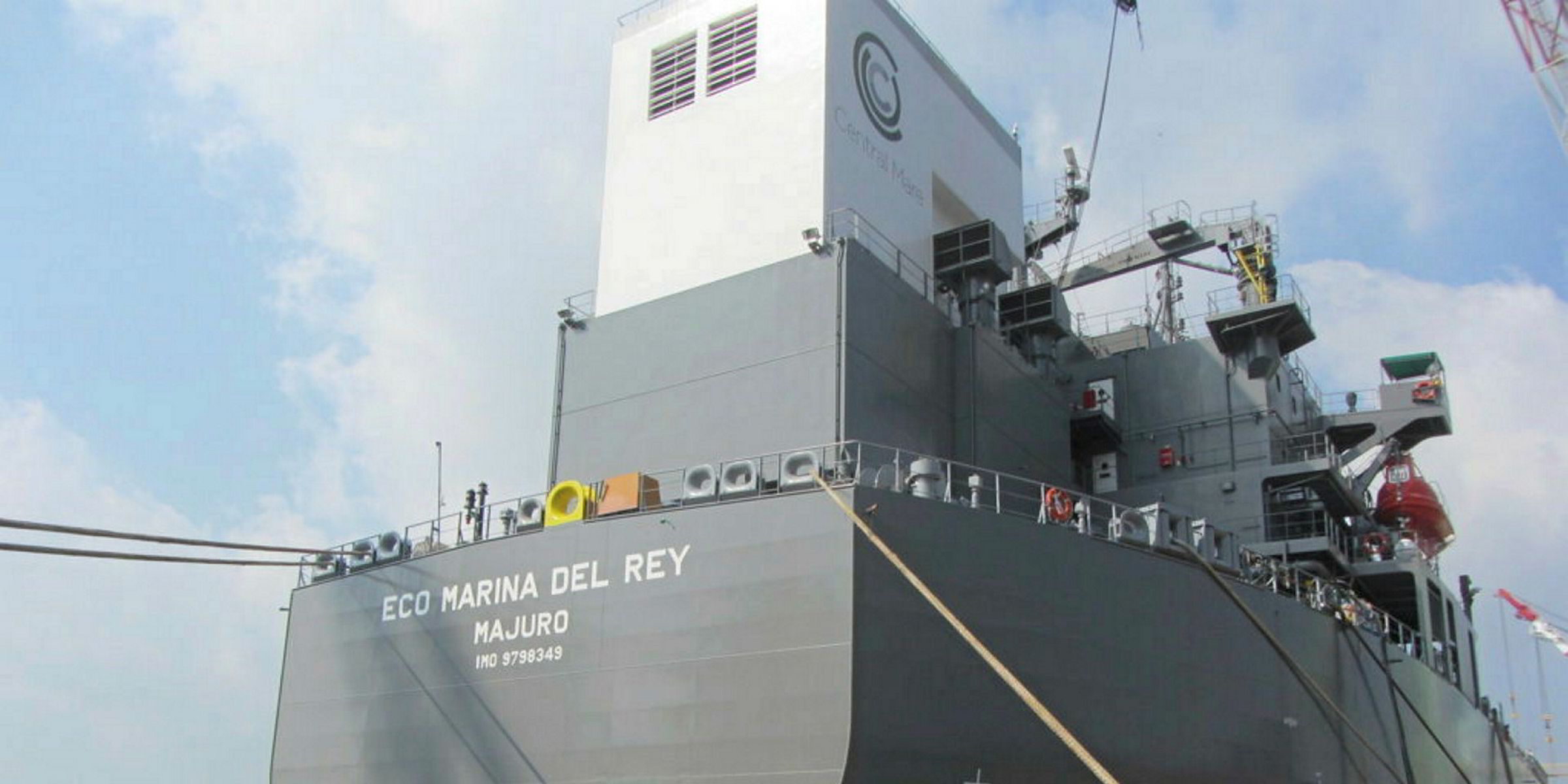Demand for crude and product tankers should peak from the late 2020s to the early 2030s as oil's heyday as the top energy source comes to an end, according to DNV GL.
In its latest annual Energy Transition Outlook, DNV GL predicted crude-tanker demand would grow from 10.2 billion tonne-nautical miles last year to an all-time high of 11.6 billion tonne-nm in 2027 before gradually falling to 6.56 billion tonne-nm in 2050.
Shipping demand in the product tanker sector is expected to rise to its peak of 3.76 billion tonne-nm in 2031 from the 2018 level of 3.24 billion tonne-nm, before easing to 2.8 billion tonne-nm in 2050.
Falling demand for oil tankers is the main reason behind the plateauing of total shipping demand after 2040, according to the German-Norwegian class society.
“We see increases in tonne-mileage over the forecast period [up till 2050] for all trade segments except crude oil and oil products.”
With strong growths in iron ore, grains and minor bulk trades, DNV GL expected demand for bulkers would grow from 28.7 billion tonne-nm in 2018 to 37.9 billion tonne-nm in 2050, the largest among all sectors.
In the same timespan, global seaborne container trade will increase to 16.2 billion tonne-nm from 9.18 billion tonne-nm, while gas trade is to rise to 4.5 billion tonne-nm from 1.68 billion tonne-nm, according to the report.
“The combined need for trade and maritime cargo will stabilise as trade in oil and coal decreases, while growth of other cargoes slows in line with decelerating growth in both global population and GDP (gross domestic product),” DNV GL said.
Peak oil
DNV GL’s prediction for shipping is based on its prediction that global oil demand will peak in 2023 before natural gas takes over as the biggest energy source in 2026, with environmental efforts in reducing emissions of greenhouse gas and fighting air pollutions.
This is a more aggressive forecast than others. BP has expected global oil demand to peak after 2035, while the International Energy Agency has forecast that oil demand will continue growing until at least 2040.
“Oil…extraction will find it increasingly difficult to attract preferential policy treatment as governments target emissions reduction and divert attention to non-carbon energy technologies,” DNV GL said.
In line with lower shipping requirement, DNV GL predicted that the crude tanker fleet capacity would decline by 30% from the current level in 2050 and that the product tanker capacity would shrink by 8%.
However, total fleet size will expand by 35% in deadweight tonnes terms by 2050, with growths in the fleets of bulkers, containerships, gas carriers and non-cargo vessels.
Ship fuel mix
Despite an expanding fleet, DNV GL forecast total energy use in international shipping would amount to 11 exajoules (EJ) in 2050--same as the 2016 level—after peaking at nearly 13 EJ in 2035.
This is because fuel consumption per tonne-nm is expected to decline by 30% on average due to energy-efficiency measures, including hull and machinery improvements and a 5% speed reduction overall, according to DNV GL.
“Vessel speeds will be adjusted to meet regulatory requirements and further varied according to market conditions and energy cost,” DNV GL said.
Assuming that the IMO’s target of cutting emissions by at least 50% from the 2008 level before 2050 can be met, DNV GL predicted carbon-neutral fuels like biomass would become the largest ship energy source.
Based on its forecast, total marine energy use would reach 270 million tonnes of oil equivalent (Mtoe) in 2050, of which 100 Mtoe are carbon-neutral fuels, 90 Mtoe are distillates or fuel oil, 60 Mtoe are LNG, and the rest electricity.
“Shortsea and non-cargo shipping will use 40% of the total energy, and, in these segments, electricity can constitute 11%,” the report said.







